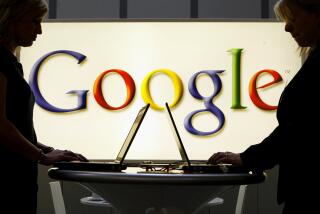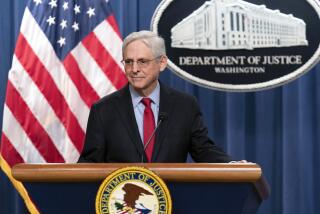High Court Won’t Hear Apple Case on Windows : Technology: The computer maker said Microsoft illegally copied its Mac interface.
- Share via
SAN FRANCISCO — Apple Computer Inc.’s seven-year crusade to prove that Microsoft Corp. illegally copied the innovative graphical software of the Apple Macintosh ended with a whimper Tuesday when the U.S. Supreme Court refused to hear the case.
The high-profile case once appeared to pose a mortal threat to Microsoft’s Windows software, which Apple alleged was copied from the Macintosh. An Apple victory would have shaken the balance of power in the computer industry and set important precedents in copyright law.
In the end, though, the case hinged mainly on a licensing agreement under which Apple had granted Microsoft the right to use certain Mac-like software features. The federal court that heard the case refused to consider the “overall look and feel” of the software, as Apple had wanted, and ultimately dismissed that case on the grounds that individual components of the Mac interface had either been licensed or were not protected by the copyright.
Apple appealed, but the Circuit Court of Appeals and now the U.S. Supreme Court have rejected the company’s arguments. Hewlett-Packard, whose New Wave software was based on Windows, was also exonerated.
*
Analysts said the case did little to set standards for copyright protection in the software industry.
“We have a crazy-quilt pattern of rules,” said Jeffrey Tarter, publisher and editor of Softletter, an industry newsletter based in Cambridge, Mass. “If the case of Apple vs. Microsoft had been tried in Boston, it is likely that the outcome would have been entirely different.”
Recently, Lotus Development Corp., creator of the popular spreadsheet software Lotus 1-2-3, won a copyright infringement case against rival Borland International. In that instance, the software’s “look and feel” was deemed to be Lotus’ intellectual property and thus protected by law.
Look and feel , a rather ambiguous term, was applied broadly by the trial judge presiding over Lotus vs. Borland. In the case of Apple vs. Microsoft, however, the judge looked at individual pieces of the software--for example, the icon that represents the command for “delete file”--and then, one by one, determined whether they were protected.
While this kind of difference in approach by two federal judges is normally the sort of thing that appeals courts try to resolve, Apple’s case was a murky one for several reasons. For one, there was the 1985 contract, under which Apple granted Microsoft a license to use Mac elements for the first version of Windows. But Judge Vaughn Walker ultimately ruled that all releases of Microsoft’s Windows were protected under the contract, not just the one version as Apple contended.
*
Another snarl for Apple was that it had “borrowed” the idea for a graphical user interface from Xerox Corp.’s Palo Alto Research Center. Thus, some elements of the Mac software that might have been protected by copyright did not even belong to Apple.
“This wasn’t a great case with which to set a nationwide standard,” Tarter said.
By a unanimous decision, a federal appeals court panel rejected Apple’s attempt to revive the case last year. The Supreme Court has now handed Apple what appears to be final defeat. It falls again to the federal district court to determine whether Apple must assume the millions of dollars in attorney fees incurred by Microsoft and Hewlett-Packard in the years of litigation.






